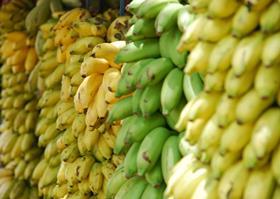
Scientific analysis suggests a suite of integrated solutions may be the way forward in tackling the TR4 threat in bananas.
Experts speaking on the opening day of the International Banana Congress in Miami summed up the latest scientific thinking on the huge problem of fusarium wilt, or TR4, and drew conclusions as to the current threat level. The disease is regarded as so serious that it could threaten the viability of the main Cavendish variety that is sold across the world.
Dr Jetse Stoorvogel from the University of Wageningen noted that there has been a significant increase in the number of published scientific papers on fusarium wilt - almost nothing up until 2008, but over 70 now - and a sharp rise to over 200 papers referencing the keywords soil, banana and fusarium. “It means we scientists are looking for the solution,” he said.
Nearly 50 of these 202 papers are focusing chiefly on biofertilisers as a solution, with 23 looking at soil properties and 20 dealing with microbiomes. Agri-ecological solutions make up 18 papers and organic fertilisers 15.
Stoorvogel said the consensus of scientific analysis is that there is no ‘silver bullet’ solution due to the complexity of the challenge facing growers. In particular, an approach seeing success in one climate and soil system may not necessarily work in another, making it difficult for experts to make useful recommendations to farms. An integrated approach taking into account varying solutions may therefore be the way forward, Stoorvogel maintained.
Another expert, Dr Eli Khayat of Israeli biotech firm Rahan Meristem, has been examining methods of bringing more genetic diversity into Cavendish in the hope of encouraging resistance to TR4. “One way people are trying to solve the problem is by creating different banana hybrids,” he explained. Science has showed there are genes that have conferred resistance, and the company has been exploring non-GM methods of transferring these to commercial varieties.
One such technique is known as Rahan’s Method, which involves in-vitro mutagenesis, which mutates the plant by demethylation of DNA. “Our purpose of doing this was to get variation and diversity. The Cavendish variety is sterile and therefore you cannot cross-hybridise it, but you can get diversity through this mechanism known as somaclonal variation.
“I don’t think Cavendish is doomed to extinction,” he concluded. “Cavendish does have the capability to be resistant.”



